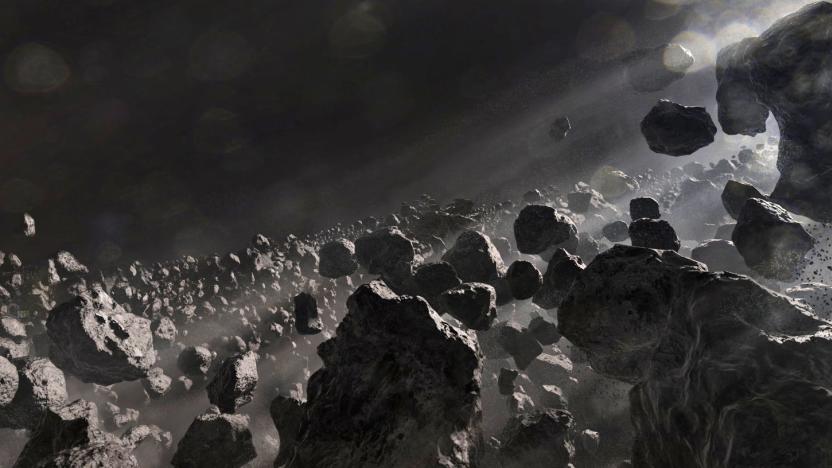wise
Latest

Google Pay is adding international money transfers
Google is adding international money transfers to its Pay app, starting with the option to send money to India and Singapore.

Asteroid family is as old as the Solar System itself
To date, astronomers haven't seen asteroid families (that is, asteroids with a common source) in the Solar System older than about 3 billion years -- well after the star system came to be 4.5 billion years ago. However, they'll have to rethink their expectations. Researchers studying asteroid data (including infrared radiation from the WISE space telescope) have found an asteroid family that's over 4 billion years years old, and likely as old as the Solar System itself. The trick was to both rule out existing asteroid families and look for the telltale signs of a very, very old group of rocks.

Citizen scientists find a failed star in the Sun's neighborhood
Citizen scientists may not have the time and equipment of their pro counterparts, but their dedication can sometimes lead to discoveries that would otherwise be impractical. Case in point: a NASA-backed citizen science initiative, Backyard Worlds: Planet 9, has found a brown dwarf (effectively, a failed star) relatively close to the Sun at 110 light years away. Rosa Castro and three other amateur observers combed through a "flipbook" of images from the Wide-field Infrared Survey Explorer to spot the dwarf as it traversed through space. The discovery is notable for a few reasons, and not just because dedicated astronomers didn't catch it.

Earth's orbiting observatories and their literally awesome images
While the Voyager 1 probe, launched in 1977, cruises into interstellar space (the farthest man-made object from Earth) and missions like New Horizons capture snaps from the outskirts of the solar system, we've been keeping the heavy hitters close to home. Massive space telescopes that scan the cosmos with augmented eyes have been orbiting the Earth for years to get a clear view of the universe without atmospheric distortion. The Hubble Space Telescope's 1990 launch set a new precedent for these space-based observatories in terms of scale and abilities. These new instruments have helped scientists gather an incredible amount of data and mind-bending photos from deep space. With Pluto hogging the spotlight lately, we decided to take a look back at some of these powerful orbiting eyes and their visual achievements. [Image credit: JPL]

NASA finds distant galaxy shining as bright as 300 trillion suns
Ever tried looking at the sun with your bare eyes? Too bright, right? Now imagine looking at something with the brightness of 300 trillion suns. That's how intense "the most luminous galaxy found to date" is, so much so that NASA has created a new classification for it and the 19 other similar galaxies it has discovered: extremely luminous infrared galaxies, or ELIRGs. Scientists have recently spotted the ELIRGs in infrared images of the sky taken by the agency's Wide-field Infrared Survey Explorer (WISE) space telescope in 2010. This particular one is located 12.5 billion light years away, which means it started forming soon after the universe was born 13.8 billion years ago. As for why it's so incredibly brilliant, NASA JPL scientist Chao-Wei Tsai says it "may be from the main growth spurt of the galaxy's black hole."

Satellite captures a baby star's 'growth spurt'
It's trivial to see mature stars in action, but baby stars are another matter. They 'only' spend 150,000 years in their earliest formative stage, and they rarely give away clues that they're around. That's what makes the above pictures so important -- scientist Emily Safron and colleagues have become the first to spot a very young protostar's "outburst," or the growth spurt that typically happens when the forming celestial body accumulates a lot of gas and dust relatively quickly. After poring over data from NASA's Wide-field Infrared Survey Explorer satellite, the astronomers noticed that a future star that was once virtually invisible, HOPS 383, lit up in the space of just a few years; it got 35 times brighter between 2006 and 2008. You won't see it finish growing up (it's 1,400 light years away, for one thing), but it's likely well on its way toward generating its own energy and officially joining the stellar ranks. [Image credit: E. Safron et al./NASA/JPL-Caltech/Univ. of Toledo]

Verizon offering up anonymous data to improve real-time traffic information
AirSage has been working on the whole cellular data-traffic flow interconnection thing for a while now, and the company has just landed itself a whale of a partner for collecting that data: Verizon. It's said that the integration of anonymous cellular signaling data from Verizon's network will quadruple the number of messages AirSage is receiving, covering 200,000 miles of roadway across the country with improved information on just how screwed you are by that lane-widening project right now. The companies aren't saying how long it'll take to fully integrate the additional data, so in the meantime, just go ahead and give yourself the extra 15 minutes to get to work -- something tells us you'll need it.



